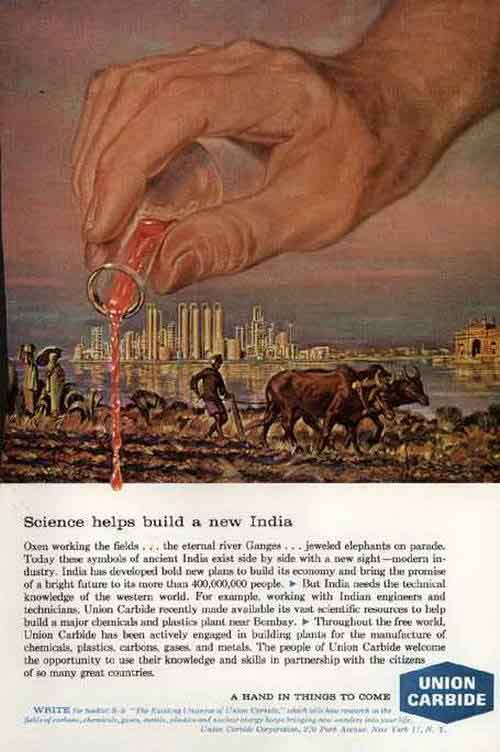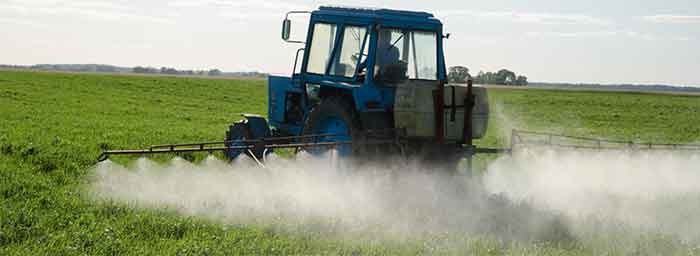Known by its brand name Roundup, glyphosate is a clear and present danger to human health.

Glyphosate, known by its famous brand name, Roundup, is a widely used herbicide (a pesticide designed to kill plants). It is a broad-spectrum herbicide that kills or damages all plant types: grasses, perennials, vines, shrubs, and trees. Glyphosate has been sold as an herbicide since 1974. Its use dramatically increased in the 21st century as its patents expired and genetically modified crop varieties that tolerated exposure to glyphosate became popular.
Experts now believe it is the “most heavily” used herbicide globally. In 2015, the World Health Organization’s International Agency for Research on Cancer (IARC) classified glyphosate as a probable human carcinogen.
Glyphosate: Widespread Use and Exposure
The U.S. Environmental Protection Agency estimated glyphosate usage in 2019—based on data collected between 2012 and 2016—and concluded that almost 300 million acres of farmland were treated with about 280 million pounds of glyphosate yearly. Another 24 million pounds of the herbicide is used every year in home yards, roadways, forestry, and turf, according to a 2020 analysis by the agency.
Given this enormous use of glyphosate in the United States, it is perhaps unsurprising that exposure to it is widespread. A unit of the Centers for Disease Control and Prevention did the largest and most comprehensive study to determine glyphosate exposure using urine collected from a sample of Americans selected between 2013 and 2014 to accurately represent the entire population. Researchers found that more than 80 percent of participants, who were six years and older, had been exposed to glyphosate. In discussing the results, the CDC suggested that food was an important source of exposure to the chemical. “Participants who had not eaten for eight or more hours had lower levels of glyphosate in their urine.”
The Salinas Study: Liver Diseases and Diabetes
A growing number of studies link exposure to glyphosate with various human health problems other than the cancer hazard that IARC evaluated. Typically classified as epidemiology, this research does not formally determine cause and effect but is more realistic and often more compelling than research done using laboratory animals or cell cultures.
One example of an epidemiology study comes from the agricultural town of Salinas, California. Starting in 1999, the University of California, Berkeley, scientists recruited pregnant mothers and then their children as volunteer participants in a study called the Center for the Health Assessment of Mothers and Children of Salinas (CHAMACOS), which was conducted over a period of more than 20 years. These “480 mother-child duos” mostly belonged to farmworker families in the Salinas area. The mothers provided their blood and urine samples and other health information during pregnancy, while the samples from children were collected when they were 5, 14, and then 18 years old. All of this data was used to answer essential questions about glyphosate exposure.
The CHAMACOS study compared teens with higher-than-average exposure to glyphosate as children to those with lower exposure. Teens with higher exposure to glyphosate and its primary breakdown product, aminomethylphosphonic acid (AMPA), were more likely to show signs of liver inflammation, meaning they had a higher risk of developing liver disease. They were also more likely to have metabolic syndrome (high blood pressure, high blood sugar, low levels of “good” cholesterol, and several other health problems), which could make them more susceptible to serious health concerns such as liver cancer, cardiovascular disease, and diabetes, later in life.
The study had several other interesting results. In the early years of the study (2000-2002), glyphosate exposures in children were infrequent and low. Most participants did not have glyphosate in their bodies. This changed dramatically as time went on. Glyphosate and AMPA were found in 80 to 90 percent of the 14-year-old participants. The researchers note that this mirrors the national and global increase in glyphosate use.
In addition, the Salinas study showed that glyphosate exposures in this agricultural farmworker community were similar to exposures across the country in people who were not farmworkers. According to the researchers, this suggests that the primary source of glyphosate exposure was food, concluding that “diet was a major source of glyphosate and AMPA exposure among… study participants… as indicated by higher urinary glyphosate or AMPA concentrations among those who ate more cereal, fruits, vegetables, bread, and in general, carbohydrates.”
American Women: Pregnancy Problems
Another example of epidemiology showing glyphosate hazards comes from a study of pregnant women living in California, Minnesota, New York, and Washington. This study found that more than 90 percent of these women were exposed to glyphosate and that higher exposures to glyphosate and AMPA during the second trimester were linked to shorter-than-normal pregnancies. The study participants represented all American pregnant women in terms of race, ethnicity, economic status, and urban versus suburban families. The report concluded that exposure to glyphosate “may impact reproductive health by shortening length of gestation.”
Canadian Study: Glyphosate in Food
A detailed evaluation of glyphosate exposure comes from a study of about 2,000 pregnant women in 10 cities across Canada between 2008 and 2011. Based on urine analysis and questionnaires, the researchers concluded that food was a more likely source of glyphosate exposure than household pesticide use or pesticide drift. The foods linked to higher glyphosate exposures were spinach, whole grain bread, soy and rice beverages, and pasta. The strongest link was “between consumption of whole grain bread and higher urinary glyphosate concentrations.”
Government Testing
Government agencies in North America have tested foods for glyphosate contamination. In the United States, the Food and Drug Administration started testing food for glyphosate in 2016-2017. In more recent testing of more than 2,000 samples from 2020, the FDA found relatively high levels of glyphosate in lentils (up to 20 parts per million, or “ppm”), garbanzo beans (up to 12 ppm), and black beans (up to 1 ppm). The U.S. Department of Agriculture tested corn (unprocessed grain) for glyphosate in 2021. Glyphosate was found in about 35 percent of the samples tested. The highest contamination level was relatively low at 0.14 ppm.
The Canadian Food Inspection Agency (CFIA) tested a much wider variety of foods (almost 8,000 samples) between 2015 and 2017. More than 40 percent were contaminated with glyphosate. Consistent with the FDA data, CFIA found relatively high levels of glyphosate in beans (up to 8 ppm), chickpeas (up to 3 ppm), and lentils (up to 3 ppm).
The researchers found other commonly eaten foods with relatively high glyphosate levels, including couscous (up to 1 ppm), pasta (up to 1 ppm), pearl barley (up to 2 ppm), oatmeal (up to 1 ppm), infant oatmeal (up to 2 ppm), and rye flour/flakes (up to 6 ppm). Two foods with somewhat lower concentrations, but important because they are eaten often, were flour (77 percent of the samples were contaminated; with levels up to 0.8 ppm) and pizza (90 percent of samples contaminated; with levels up to 0.5 ppm). The research by CFIA found that “The highest glyphosate levels were observed in pulses and wheat products.”
Consumer Advocacy Group Testing
Several nonprofit organizations have also conducted testing of popular foods for glyphosate contamination. This testing is beneficial because the results identify brands contaminated with the herbicide, which would typically not be part of the government agency testing. Some 2022 results from the Detox Project, a research platform, provide details about glyphosate residue levels for brands such as Village Hearth’s 100% whole wheat bread (1 ppm), 365 Whole Foods Market’s whole wheat bread (1 ppm), and Quaker Oats (0.5 ppm).
In some good news, the Environmental Working Group reported in 2023 that glyphosate contamination of oat cereals and other oat-based products has decreased, with the highest levels found in Quaker Oatmeal Squares (less than 0.5 ppm).
Organic Farming
Certified organic farmers do not use glyphosate or most other synthetic pesticides. Buying and eating organic food is an excellent way to reduce glyphosate exposure. For example, a 2020 peer-reviewed study found that glyphosate exposure in four U.S. families was reduced by 70 percent within six days after they switched to an organic diet. In the CFIA study of glyphosate contamination of Canadian foods, testing of more than 1,000 organic items found that 75 percent were free of glyphosate, and most of the remaining organic products had only small amounts of the chemical. Organic products can be contaminated by drift, contaminated water, or contaminated equipment, but these levels are typically low.
The amount of organic farmland in the U.S. was almost five million acres in 2021, and organic food sales topped $60 billion for the first time in 2022, according to a 2023 survey by the Organic Trade Association.
“Organic has proven it can withstand short-term economic storms. Despite the fluctuation of any given moment, Americans are still investing in their personal health, and, with increasing interest, in the environment,” said Organic Trade Association CEO Tom Chapman, according to a May 2023 press release.
If organic farming continues to expand and is made accessible to consumers across the U.S., a future with glyphosate-free food seems within reach.
Caroline Cox is a retired pesticide scientist. She was a staff scientist at the Northwest Coalition for Alternatives to Pesticides from 1990 to 2006 and a research director and senior scientist at the Center for Environmental Health from 2006 to 2020. She has been writing about glyphosate hazards since the 1990s. She is a contributor to the Observatory.
This article was produced by Earth | Food | Life, a project of the Independent Media Institute.















































